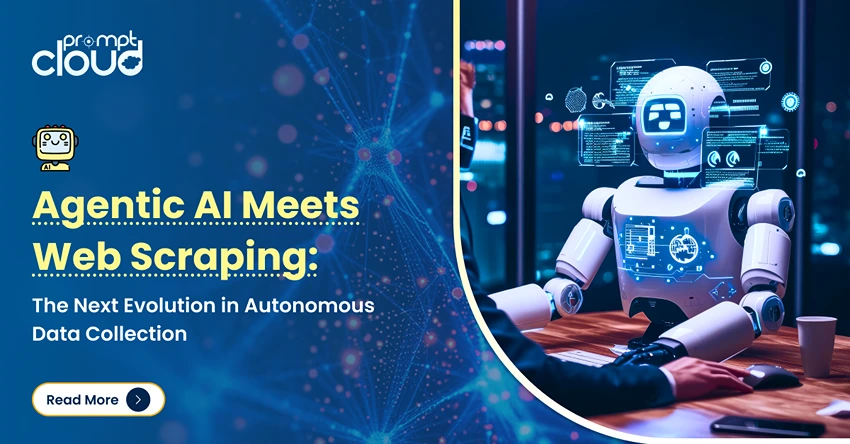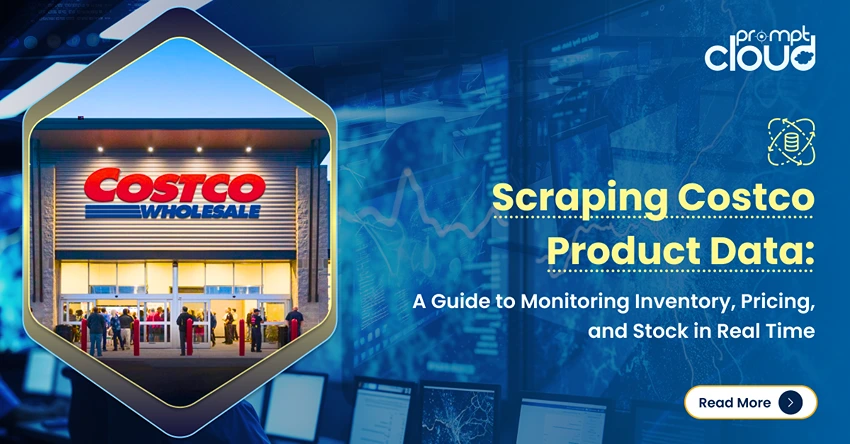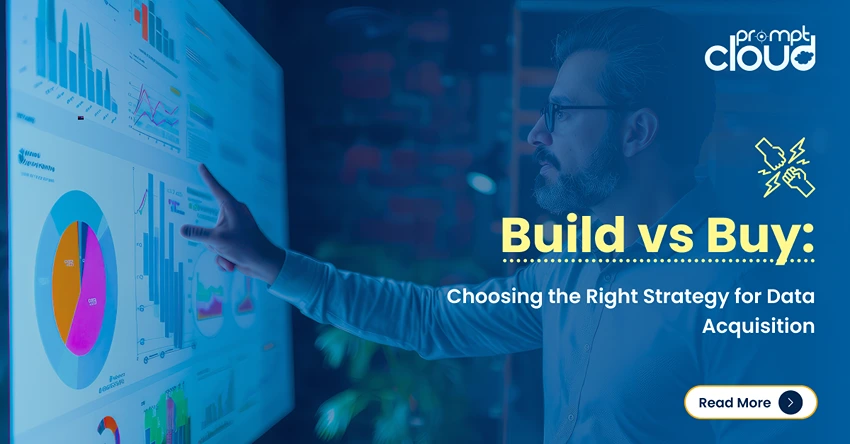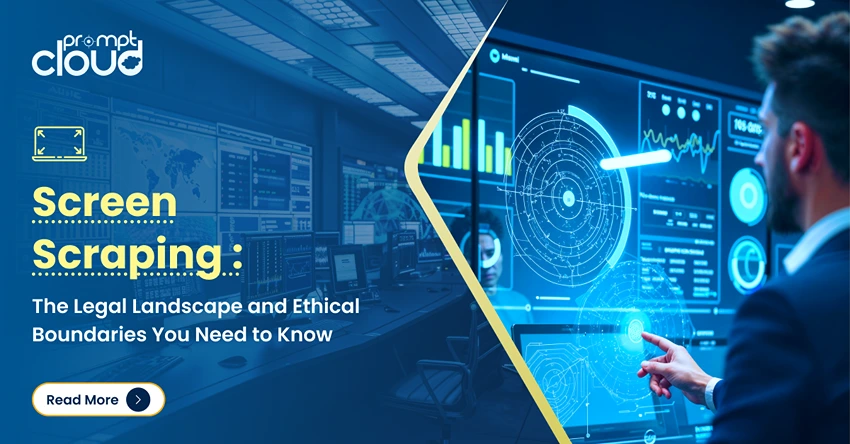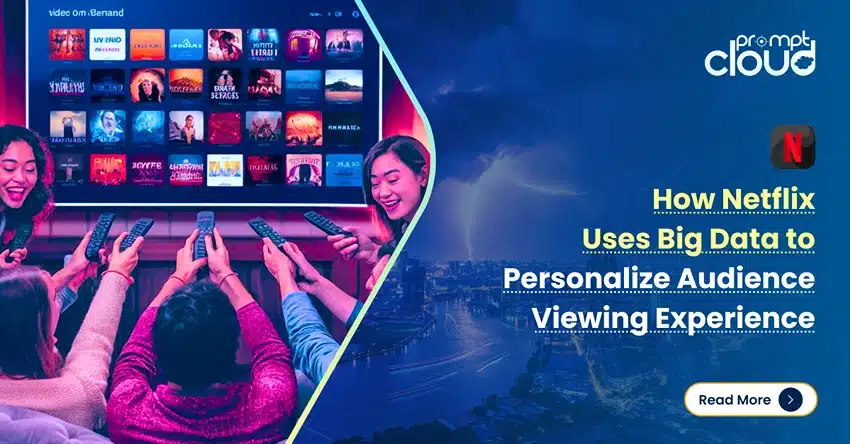
Ever opened Netflix and felt like it knew exactly what you were in the mood to watch? You’re not alone—and that kind of personalized experience isn’t just luck. It’s the result of some seriously smart data work happening behind the scenes. Netflix big data strategy is one of the main reasons the platform leads the global streaming game today.
With over 270 million subscribers worldwide, Netflix has access to an enormous pool of data. Every time you hit play, stop halfway through a movie, search for a title, or even scroll past a show without watching—it’s tracked. And Netflix doesn’t just store that information. It uses it. According to Netflix, more than 80% of what people end up watching comes from their recommendation system. That means most viewers aren’t actively picking content—they’re being guided toward it, subtly and effectively, by data-powered suggestions.
So, how does Netflix use big data to pull this off? The short version: in just about every part of its operation. From recommending shows to deciding what original content to produce, big data plays a central role. But there’s a lot more happening under the surface, especially when it comes to personalization. This article breaks down how Netflix data is collected and analyzed, how it feeds into the recommendation engine, and how it even impacts the thumbnails you see. We’ll also talk about privacy concerns and what businesses outside of media can learn from this big data use case.
How Netflix Collects and Uses Big Data
So, what kind of data is Netflix collecting—and what does it actually do with it?
The short answer is: a lot. Every time you interact with Netflix, you’re contributing to a giant pool of information. But it’s not just about what you watch. Netflix big data strategy goes way beyond that. It tracks how you watch, when you watch, what device you’re using, and even how long you hover over a thumbnail before clicking or moving on.
Let’s break that down a bit.
What Netflix Tracks
Netflix gathers data from a wide range of user actions. This includes:
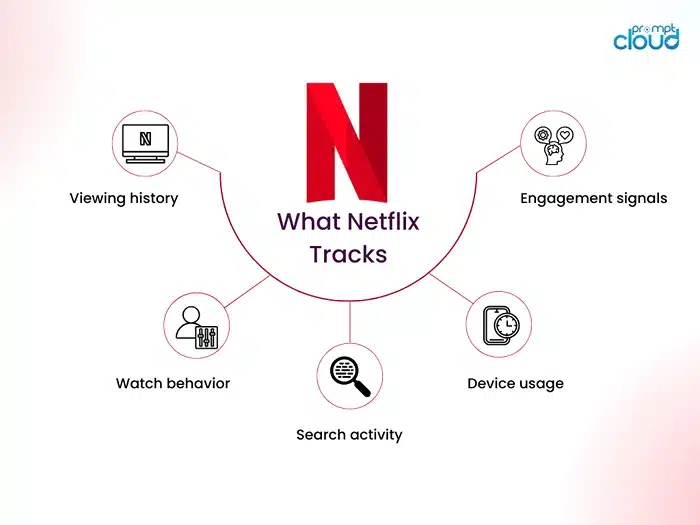
- Viewing history: What shows or movies you’ve watched, how many times, and at what times of day.
- Watch behavior: Did you binge five episodes in a row or stop halfway through one? Did you rewatch the same scene multiple times?
- Search activity: What you’re looking for—even if you don’t end up watching it—gives Netflix insight into your interests.
- Device usage: Are you watching on your phone during your commute, or on a smart TV at night? Device data helps tailor the experience.
- Engagement signals: Hovering over a title, watching a trailer, or skipping intros are all clues that feed into your profile.
All this information becomes a part of your Netflix data footprint, and it doesn’t sit idle. It’s constantly being analyzed using big data analytics techniques that allow Netflix to understand your habits and preferences better than you might yourself.
Why It Matters
You might wonder—why go through all this effort? It’s because personalization keeps people watching. The more time you spend on Netflix, the more likely you are to keep your subscription. And the better they can tailor your experience, the harder it becomes for competitors to lure you away.
This is where big data really shines. It’s not just about collecting numbers; it’s about using them to make smart, meaningful decisions that affect the way millions of people use the platform every day. That’s the power of big data use cases when they’re done right.
The Role of Big Data Analytics in Netflix’s Recommendation System
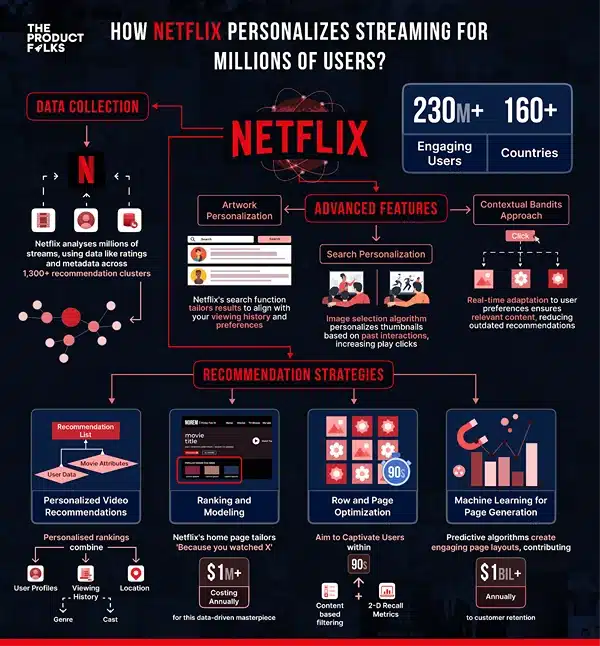
Image Source: The Product Folks
One of the most impressive things about Netflix is how it always seems to know what you might want to watch next. That’s not a lucky guess—it’s the result of some of the most sophisticated big data analytics in the entertainment world.
At the core of this is Netflix’s recommendation engine, which uses Netflix big data to suggest content that feels almost custom-made for each viewer. In fact, personalization is so key to Netflix’s strategy that the homepage looks completely different for every user. No two people will see exactly the same layout, thumbnails, or suggestions—even if they’ve watched some of the same content.
How It Works
Netflix uses machine learning algorithms to crunch massive volumes of data in real time. This includes everything from your previous watch history to your search terms, completion rate, ratings (if you give them), and even your scrolling speed. It also looks at patterns across users who are similar to you, often called collaborative filtering.
Say you watched a few crime thrillers in the past month and rated a documentary highly. If thousands of other users who followed a similar path ended up loving a particular show, Netflix is likely to recommend it to you. It’s all based on probability and behavior trends—powered by big data analytics.
But Netflix doesn’t stop at what you do. It compares your data with millions of other viewing journeys to find patterns. This lets it serve up suggestions that are personalized, but also deeply optimized by what’s working across the platform. It’s a prime example of how Netflix uses big data to go beyond one-to-one personalization and tap into global intelligence.
The Impact of Smart Recommendations
This recommendation engine is responsible for around 80% of the content watched on Netflix, which shows how crucial it is. Instead of searching endlessly for something to watch (which can lead to frustration or even cancellation), most users find a show or movie they like within seconds, thanks to data-driven suggestions.
The algorithm doesn’t just guess; it constantly learns and adapts. If you stop watching comedies and lean into documentaries, Netflix will catch that shift and change your suggestions quickly. This is what makes Netflix data so powerful—it’s not just a snapshot of your habits, it’s a live, evolving map of your preferences.
Big Data Use Case – Optimizing Content Creation & Licensing at Netflix
You might think Netflix’s original shows are picked by creative instinct or just good storytelling—and yes, creativity plays a role. But behind every “Netflix Original” you binge-watch, there’s usually a mountain of big data informing that decision.
This is one of the lesser-known but most impactful ways Netflix uses big data: to decide what content to create or acquire. And it’s not just a guesswork game—they rely on viewer insights to back up every content investment.
Using Viewer Data to Guide Content Strategy
When Netflix considers producing a new series or licensing a show from another studio, it turns to the Netflix data it already has. By analyzing what genres are trending in different regions, how certain age groups are interacting with shows, or how binge-worthy a title is (i.e., how quickly people finish it), the company can predict which kinds of content are likely to perform well.
For example, if data shows that a large number of users in Latin America are watching action dramas with strong female leads, that insight might lead to the development of a local production in that exact genre. Similarly, if viewers consistently drop off after episode two of a series, it could signal that a show isn’t compelling enough to be worth renewing.
This is big data analytics at work—guiding creative and financial decisions based on hard evidence rather than gut feelings.
Global vs. Local Programming Decisions
Netflix also uses big data to tailor its content library for different regions. The shows and movies you see in India are often different from what’s trending in Canada or Germany, and that’s intentional. Through localized viewing patterns and cultural preferences extracted from data, Netflix builds region-specific strategies that help it compete in global markets while staying relevant locally.
This strategic use of data helped Netflix shift from being just a platform for hosting other studios’ content to becoming a powerhouse studio in its own right. Today, they spend billions of dollars annually on content, and a big chunk of that is directly shaped by analytics.
Predicting Success Before a Show is Made
Perhaps the most powerful aspect of Netflix’s big data use case is its ability to predict success before something is produced. For example, data might reveal that users are interested in sci-fi thrillers featuring strong ensemble casts, with a runtime of under 45 minutes per episode. That’s a blueprint for greenlighting a show like Stranger Things—and it’s no coincidence that Netflix renews its hits faster than most networks.
By combining Netflix big data with creative development, the company reduces risk and boosts the chances of building a hit. It’s not a perfect science—but it gives them a serious edge in a fiercely competitive industry.
How Netflix Uses Big Data to Make Your Viewing Experience Feel Effortless
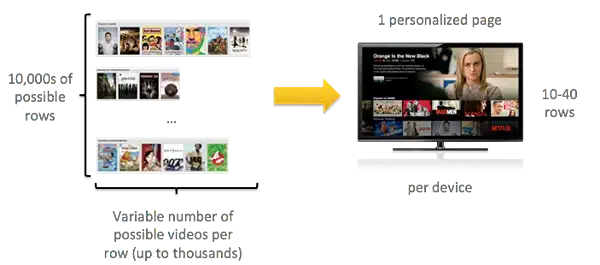
Image Source: Netflix Tech Blog
You know that feeling when you open Netflix and everything just… works? The recommendations make sense, the video quality adjusts smoothly, and even the thumbnail images somehow make a show look more interesting. None of that is random. It’s all carefully designed using insights from Netflix big data.
Beyond picking what content to serve you, Netflix uses big data analytics to shape how that content is delivered. It’s the subtle stuff—the user interface, streaming speed, artwork, layout—that makes your viewing experience feel seamless. And most of it is powered by data.
Personalized Thumbnails You Didn’t Even Notice Were Personalized
One clever trick Netflix uses is customizing the thumbnail images you see. You and your friend might both see The Crown in your recommendations, but your thumbnails could be totally different.
Why? Because Netflix tests different images to see which ones get more clicks. If you tend to watch romantic dramas, your version of the thumbnail might feature a close-up of the lead couple. If you’re more into political thrillers, it might show a scene with the Queen and her advisors. This is a small but powerful way Netflix uses your Netflix data to influence what you click on.
It’s not just about appearances either—it’s about engagement. These micro-choices make it more likely that you’ll hit play instead of scrolling past. And the more you watch, the more Netflix learns.
Streaming Quality That Adjusts to You in Real-Time
Another place where big data plays a key role is in streaming quality. Netflix uses a technology called adaptive streaming. It pulls from network and device data in real time to adjust video resolution and buffering based on your internet speed and device capability.
This helps Netflix deliver high-quality video even on slower connections, reducing buffering and playback errors. If you’ve ever watched Netflix on your phone during a bad Wi-Fi day and it still played smoothly, that’s big data at work behind the scenes.
UI That Learns What Works for You
Netflix is constantly A/B testing different layouts, menu structures, and homepage formats to find out what works best for users like you. These tests might seem invisible, but they’re based on detailed Netflix big data—how users navigate the app, where they drop off, what they click first.
Over time, Netflix uses this information to fine-tune the experience. Whether it’s moving the “Continue Watching” row higher or showing trending titles more prominently, these decisions are shaped by patterns across millions of user sessions.
This is a smart example of how Netflix uses big data not just to guess what you like, but to build an experience that feels smooth, natural, and personalized from the moment you log in.
The Hidden Costs of Data: Privacy and Ethical Challenges in Netflix’s Personalization Strategy
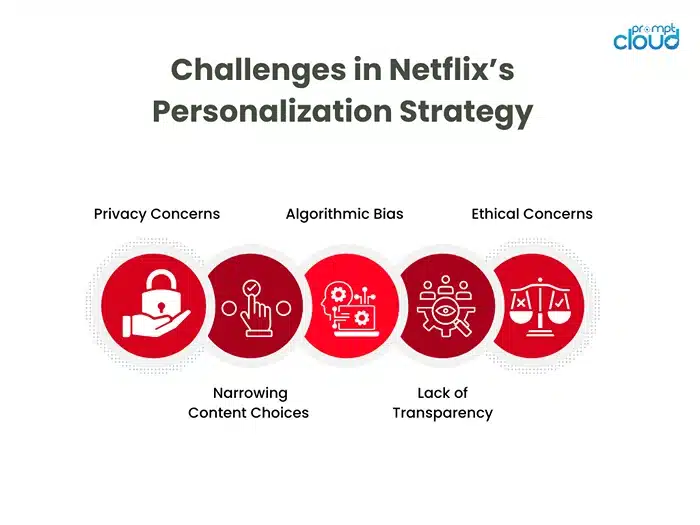
It’s easy to admire how seamlessly Netflix serves up personalized entertainment. But underneath the surface of this beautifully curated experience lies a more complex question: At what cost does personalization come?
Privacy Concerns
One of the most talked-about issues in big data analytics is privacy. Netflix claims it does not sell user data to third parties, and compared to social media platforms, it has stayed relatively controversy-free. But that doesn’t mean users aren’t being tracked extensively. Every click, pause, rewind, skip, or even hover on a thumbnail adds another layer to your Netflix data profile.
Narrowing Content Choices (Filter Bubbles)
For most users, this is a trade-off they’re willing to make. They get convenience and content that suits their taste. But for critics, the question is bigger: should algorithms know you better than you know yourself? Should they quietly nudge you toward watching what the data thinks you’ll like, even if that means narrowing your exposure?
Algorithmic Bias
There’s also the issue of bias. Algorithms reflect the data they’re trained on, which means they can unintentionally reinforce stereotypes. For example, if certain genres are more commonly watched by certain demographics, the recommendation system could keep pushing similar content, unintentionally boxing viewers into narrow content bubbles.
Lack of Transparency
Transparency is another concern. Netflix doesn’t fully reveal how its recommendation engine works—understandably so, since it’s proprietary. But for researchers and even some users, the lack of visibility into how decisions are made raises questions about accountability. If a show never appears on your feed, how would you even know it exists?
Efforts to Address Ethical Concerns
These aren’t easy problems to solve. And to Netflix’s credit, they’re aware of them. The company invests in fairness research, algorithm auditing, and privacy design to ensure that data use stays within ethical boundaries. Still, as Netflix big data grows more powerful, so does its responsibility to use it wisely.
What’s Next for Big Data in Streaming? Lessons from Netflix’s Playbook
Looking ahead, big data is going to keep shaping the streaming world. Netflix is leading the way, making sure every recommendation feels personal and perfectly timed. They’ll keep using data to understand viewers better and make the whole experience smoother and more intuitive.
But here’s the cool part—this isn’t just for Netflix. Any business can take a page from their book. It’s not just about collecting data; it’s about using it to understand your audience. Knowing what your customers like, when they like it, and how they engage with what you offer? That’s powerful. And that’s exactly what Netflix has figured out.
Here are some key takeaways from their playbook:
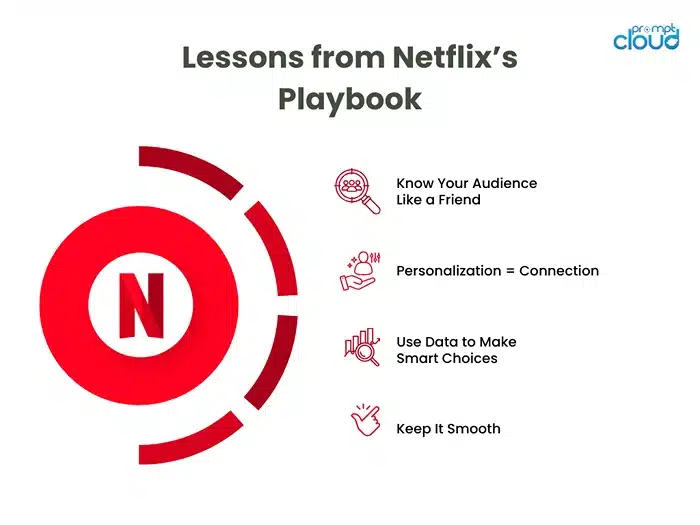
Know Your Audience Like a Friend
Netflix doesn’t guess what you might like—they know. They track what you watch, when you watch it, and what you skip. That’s the kind of insight businesses need. Get to know your audience like Netflix knows you, and you’ll be way ahead.
Personalization = Connection
Have you ever watched a show on Netflix and thought, “How did they know I’d love this?” That’s the magic of data. The more personal the experience, the more connected customers will feel to your brand. Businesses, big or small, can absolutely do this too.
Use Data to Make Smart Choices
Netflix isn’t just throwing things at the wall to see what sticks. Every piece of content they produce or acquire is based on data. And every tweak they make to their platform is because they’ve seen how it affects your experience. That’s data working for them. Businesses should be doing the same.
Keep It Smooth
The best part about Netflix? You never even notice how much data it’s using to make your experience better. It just feels right. That’s what you should aim for—an experience that’s so seamless and natural that your customers don’t even realize they’re being given the best possible service.
So whether you’re in entertainment, e-commerce, or any other field, Netflix’s approach shows that data can be used to build experiences that feel real, not just transactional. If you can tap into that, you’ll be ahead of the game.
Big Data is the Key to the Future of Streaming (and Beyond)
Netflix has cracked the code on how to use big data to create a totally personalized experience. They know what you want before you even know it yourself—and that’s not some futuristic dream, that’s happening right now. If Netflix can do this with all the data they collect, there’s no reason your business can’t make similar magic happen.
It’s all about using data to really understand your customers, make smarter decisions, and offer an experience that keeps them coming back. And the best part? You don’t need to be a tech giant to do it.If you’re ready to take control of your data and start using it like Netflix does, PromptCloud can help. We provide the tools you need to collect and analyze your data, so you can make better decisions, engage your audience, and take your business to the next level. Schedule a demo now!











